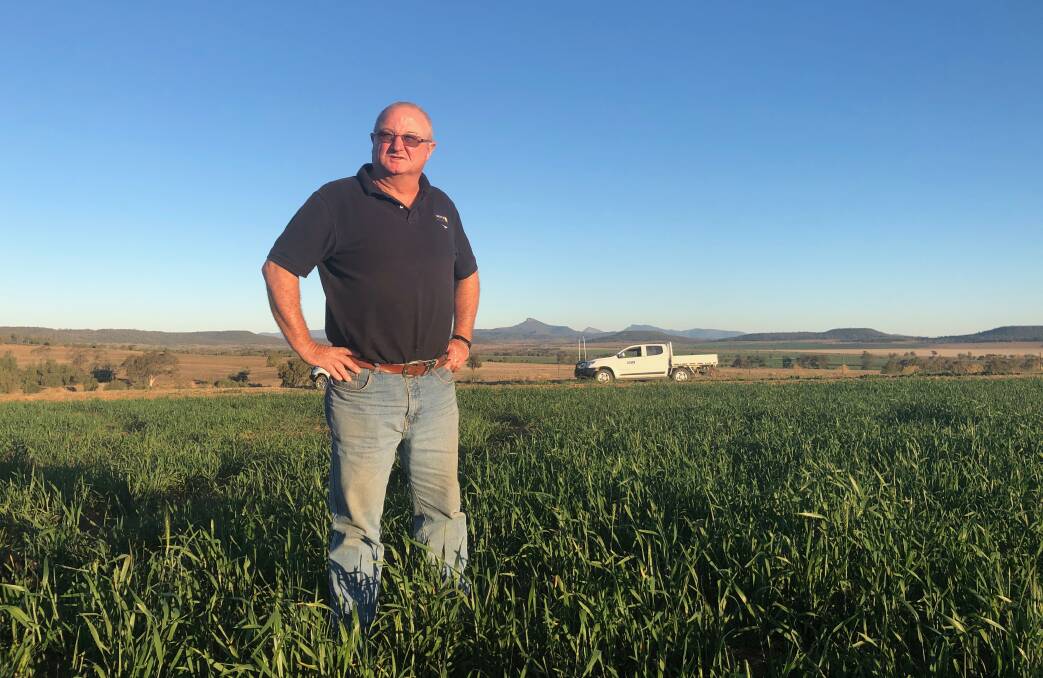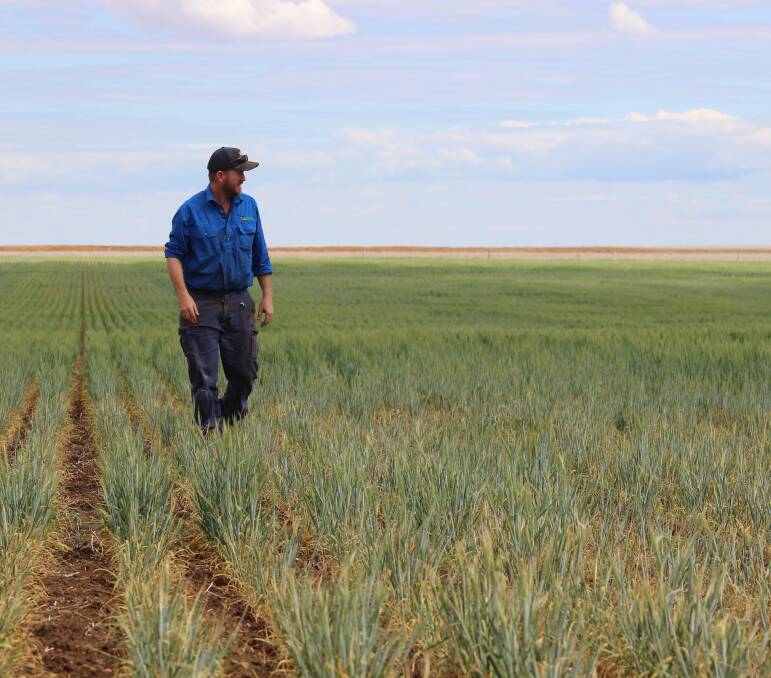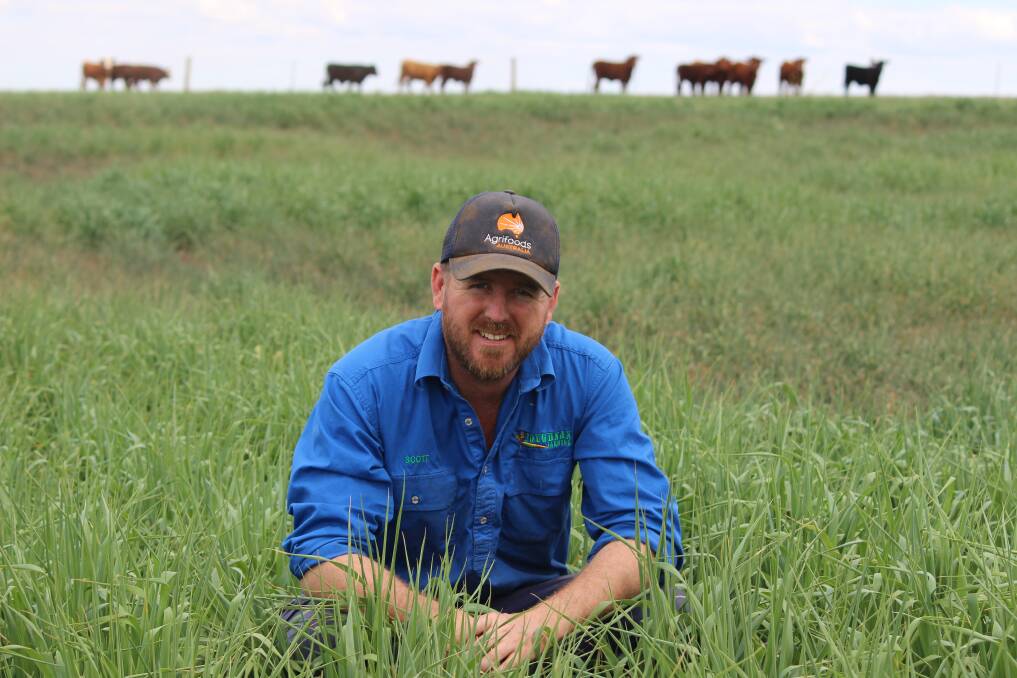
The weather over the next six weeks will decide the fate of drought stricken grain crops across NSW and Queensland.
With hard decisions to make, veteran agronomists are urging growers to look at the big picture before acting on short term profits or without considering the ramification on next season's crop potential.
Coonamble NSW Delta Agribusiness consulting agronomist Graeme Callaghan said carrying crops through to maturity would allow farmers to retain some much needed ground cover over summer.
"If they are going to spray out a crop, they need to consider what are they going to have left afterwards," he said.
"You are not going to have a lot of stubble or ground cover left if you spray out a cereal crop too early. It really has to mature to retain stubble and ground cover.

"When a drought or long dry period breaks, it breaks with storms."
Mr Callaghan said this year was a good example of the difference ground cover could make.
"The March rain that the south-east got in our district and the early May rain that the north-west got, were heavy rainfall events over a short period," he said.
"Retained stubble made the country wet up a lot better and more evenly, bare country just ran off and contributed to the Murray Darling basin.
No drought has kept going and that is what we have to prepare for. It will rain again and we need to be ready
- Graeme Callaghan, Delta Agribusiness
"The ground cover helped harvest the extremely quick rainfall events we were getting."
Mr Callaghan said those thinking of feeding off crops needed to weigh up the benefits against the longer term damage.
"Number one is loss of ground cover, and number two is fining the surface up with the trampling of livestock," he said.
Read more: Queensland in holding pattern until it rains
"If you wanted to capture a short-term gain then I would be looking at fodder retention, such as a silage or hay if it had any bulk to it, which would carry you further into the future."
Mr Callaghan said over-grazing could have dire consequences for establishing a crop next year.
"It's about trying to get out of the drought, not managing the drought," he said.
"You are losing that top soil. It also makes your fallow management very hard when you have extremely dusty situations.

"The cost is the loss of opportunity of getting the next crop in."
B&W Rural manager and senior agronomist Peter Birch said while areas west of Moree had barely any crop planted, there were pockets looking good east of the Newell highway.
"There are some reasonable crops, where they got 100 millimetres of rain in big storms in April," he said.
"Having said that, there was a fair bit of biomass in some of those crops, the dry and the heat will be hurting them and hard decisions have to be made right now."
Make smart hay
Mr Birch said for crops unlikely to make grain fill, or those coming into head too early, hay was an option.
To make the decision somewhat easier, Mr Birch said B&W Rural had been utilising a satellite imagery service to quantify how much hay could be expected from a paddock.
"There are a few people starting to cut hay already, mainly barley and canola," he said.
"We are tracking the biomass on Sata Map imagery to give people a benchmark of what they can expect to get from hay.
"We are trying to get people not to cut it too short. You don't really want it on the ground because the lack of stubble has been the biggest killer over the last 12 months."
Mr Birch said some growers in areas east of Moree had deliberately targeted the hay market.
"There was quite a bit of early barley sown, some of it was deliberately sown early for the hay making opportunity and some was sown relatively early for the variety because that was where the rainfall opportunity turned up," he said.
"We are trying to get it to milky dough stage if we can and that is really a decision then to see how much biomass you have."
However, Mr Birch said the expected hay yield differed markedly between varieties.
"There was a lot of Spartacus barley planted and it probably doesn't have as much biomass as the Compass or Commander. It is also relatively tough, so it might be tough enough to produce a yield of grain."
Mr Birch said people looking at grazing off failing crops would need to weigh up their livestock situation against the cost of ground cover.
"It depends on your livestock situation - putting them in on the crop can be the cheapest form of feed," he said.
"But we are encouraging people if they do put them in to break the paddocks up with electric fences into smaller areas, graze them quick and hard, then get them back out."
"That will leave some stubble to protect the soil and get their fallow started for next time."
Mr Birch said the stage and health of the crop was also important to consider before allowing cattle to graze.
"Some crops never developed secondary roots and the plants will just be pulled out," he said.
Mr Birch said a lack of stubble had cost western growers.
"The single biggest thing that has killed the western areas is 2016 chickpea stubble that disappeared back to nothing," he said.
"25, 30 or 35mm of rain didn't get them anywhere because there was no stubble. It wets the surface, doesn't join the moisture underneath and two weeks later it is gone."
Mr Callaghan said paddocks not cropped in Central West NSW were also looking pretty bare.
"Generally the ground cover around the district is pretty low, even where we have retained stubble from a couple of years ago it has become brittle and blown away now," he said.
"Locally we have been somewhat fortunate. What is in the ground will probably get a fair way, and unless it really turns to disaster in the next six weeks we will have headers run this year, which we didn't last year.
"The crops are based on extremely long fallows and stored moisture leftover from 2016."
Mr Callaghan said farmers should still concentrate on good agronomic practice, even if they probably weren't going to harvest the crop, as it would reduce future costs.
"Spending a bit on in-crop sprays is a lot better then trying to chase the weeds in a fallow situation," he said.
"No drought has kept going and that is what we have to prepare for. It will rain again and we need to be ready.
"We might be in the situation in three months time where we can plant a summer crop.
"Now is the time to look at your subsoil constraints, consider long fallow disorders, some of these paddocks haven't had a crop in five year - think about nutrition.
"At the moment we have the time to look at those things, rather than when it rains and we are making decisions on the run."
Start the day with all the big news in agriculture! Click here to sign up to receive our daily Farmonline newsletter.


